This is the 43rd in a series of posts on the Hasselblad X2D 100C camera and the XCD lenses. You will be able to find all the posts in this series by looking at the righthand column on this page and finding the Category “X2D”.
Some casual shooting with the new 90/2.5 XCD lens left me with the impression that it was an impressive optic: small, fairly light, reasonably fast, and pretty darned sharp. Time for some controlled testing.
- Camera: Hasselblad X2D 100C
- Lens: 90 mm f/2.5 XCD-V
- Tripod: RRS carbon fiber
- Head: Arca Swiss C1
- Self timer: 5 sec.
- Electronic shutter
- AF-S, four shots per test condition, pick the sharpest one
- Target distance: 10 meters
- ISO 64
- Manual exposure, f/2.5, f/4, f/5.6, f/8, f/11, with corresponding shutter speeds
- Target centered, near left edge, near top left corner
Images developed in Lightroom Classic with
- Camera standard profile
- Sharpening amount 20, radius 1
- Sharpening detail 0
- White balanced to paper background
- Shown here at about 170% magnification
In the center:
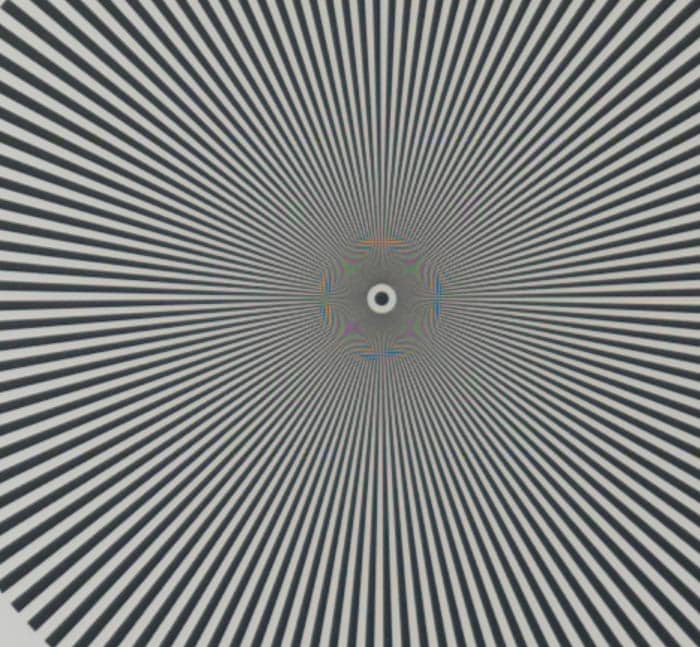
Sharp, with good contrast wide open.
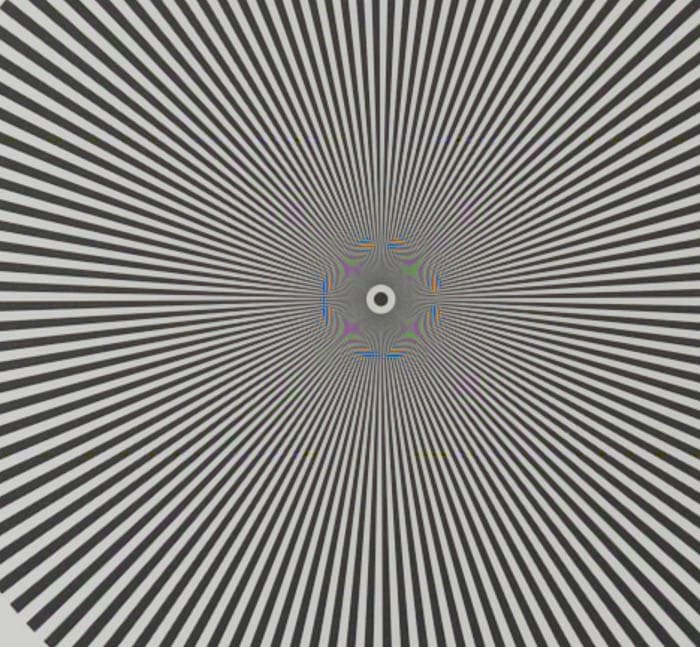
Even sharper at f/4.
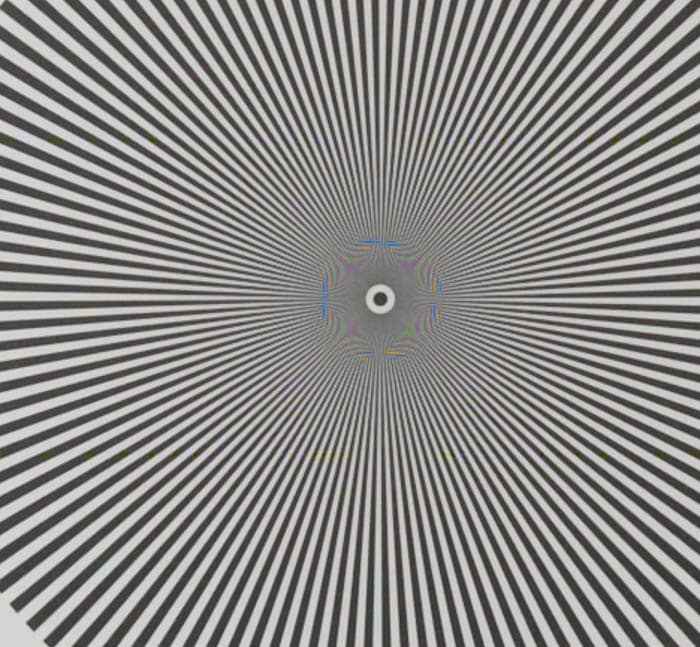
Nearly the same at f/5.6.
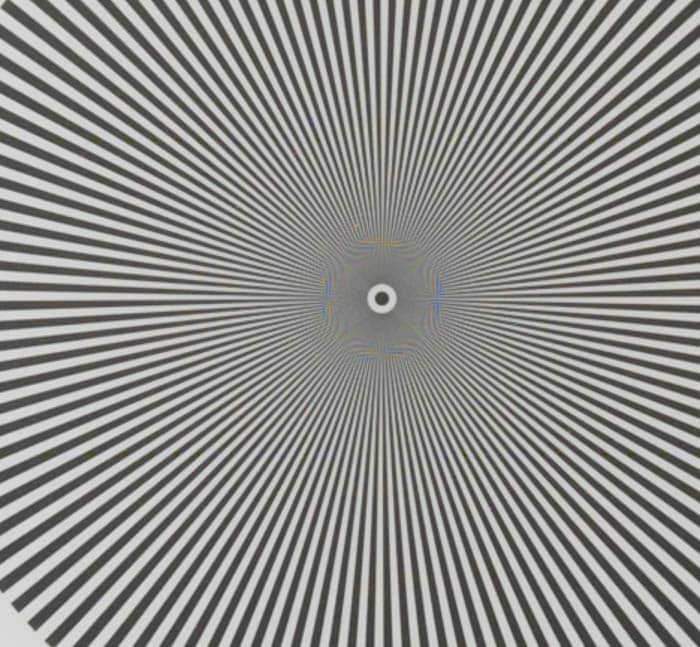
Diffraction affecting sharpness at f/8.
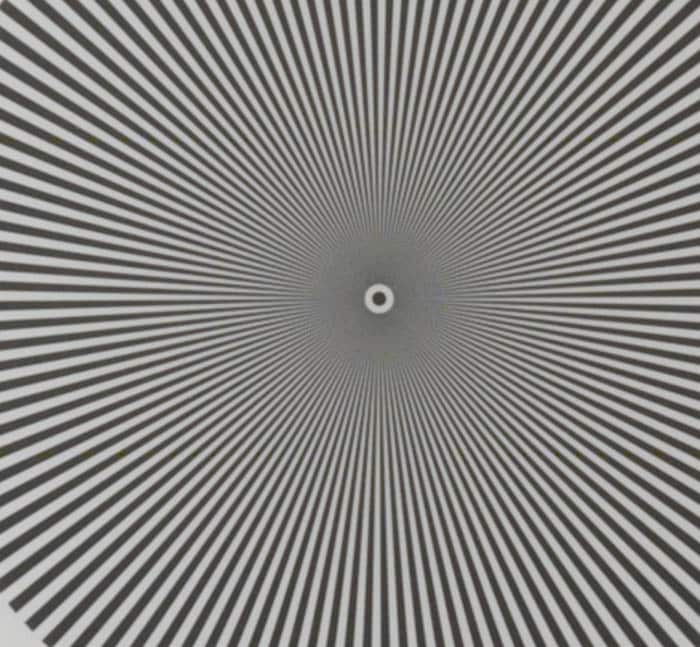
Diffraction seriously affecting sharpness at f/11. This is the stop to use if you’re worried about aliasing.
At the edge:
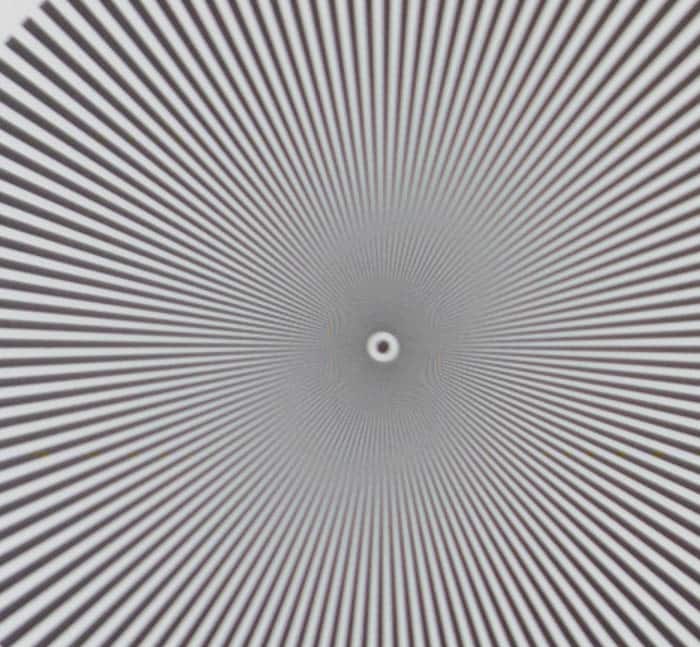
Sharpness for tangential lines is affected. Radial lines still look good. Some phase effects.
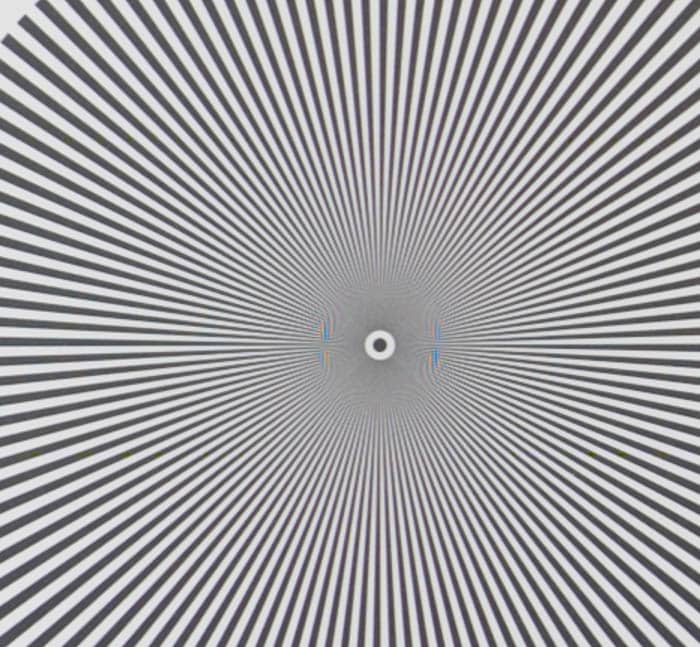
Phase effects are gone. Still suffering for tangential lines.
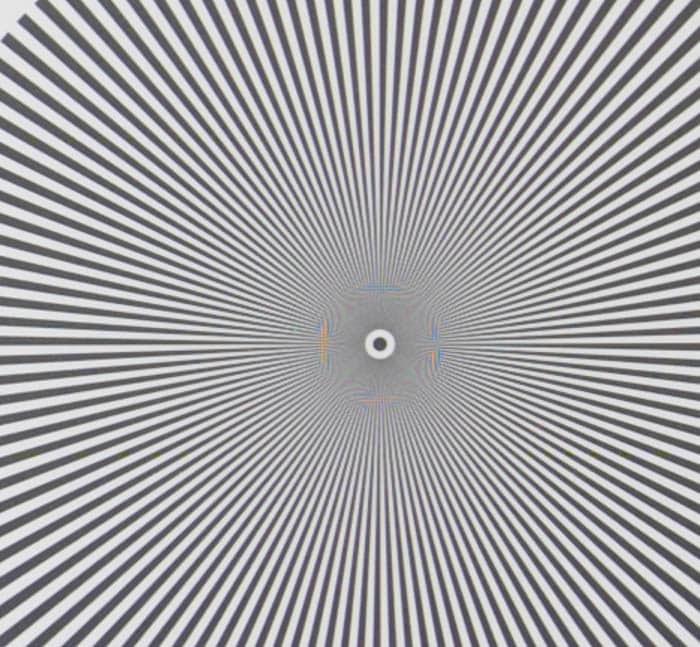
This looks very good.
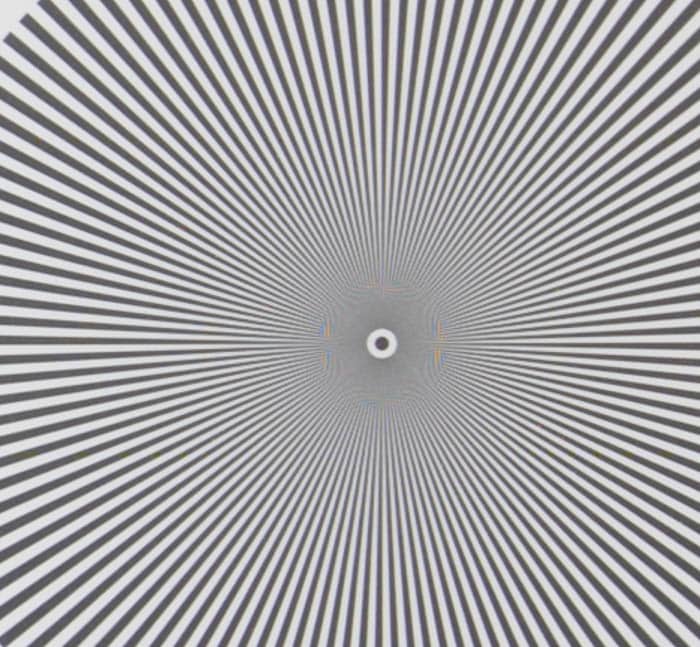
Diffraction costing us sharpness.
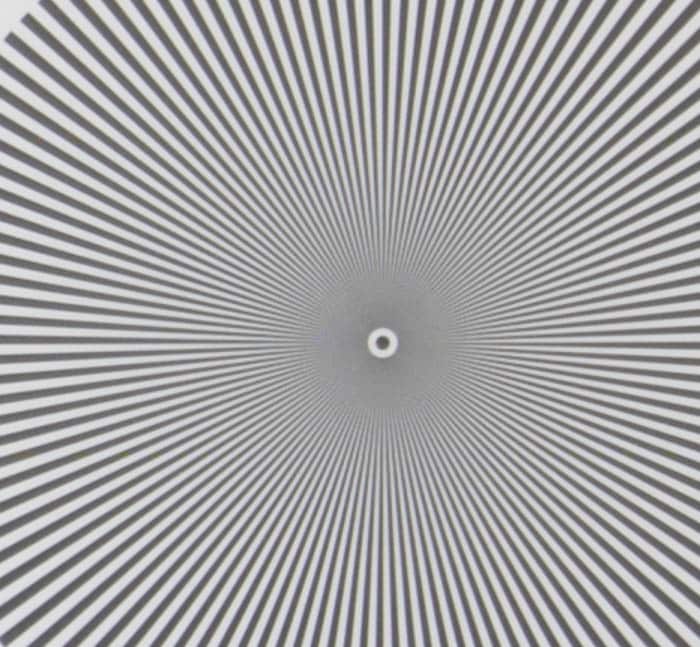
Diffraction costing us a lot of sharpness.
In the upper left corner:
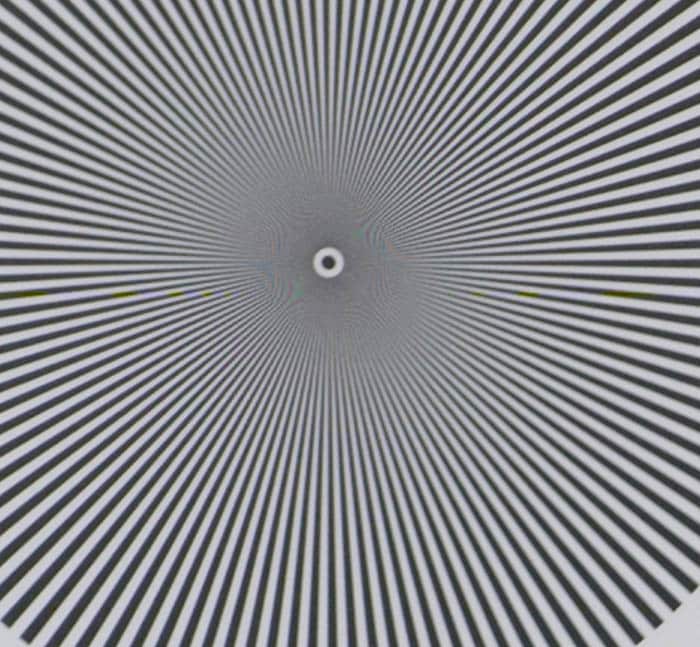
Tangential lines not imaged as sharply.
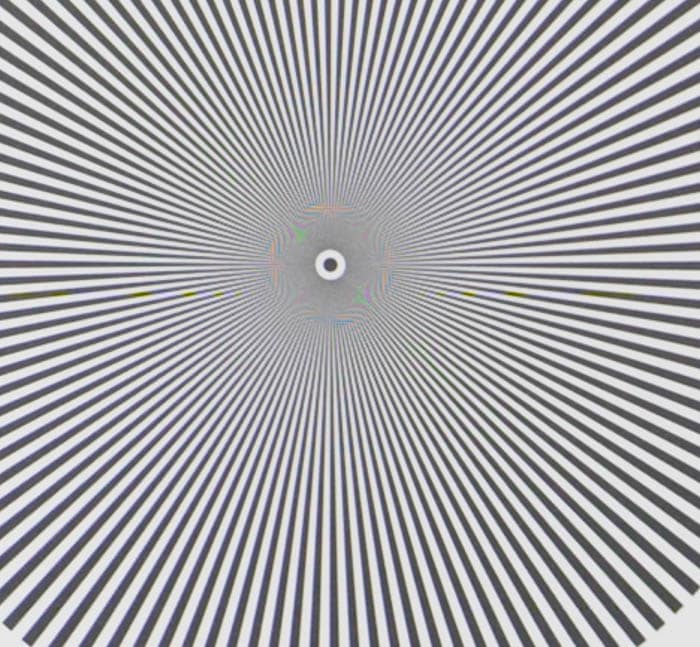
That’s pretty impressive!
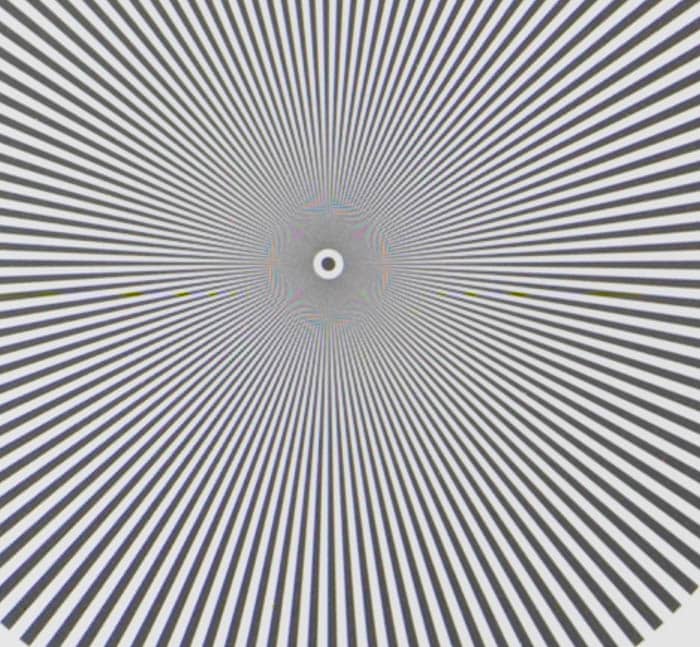
So is that.
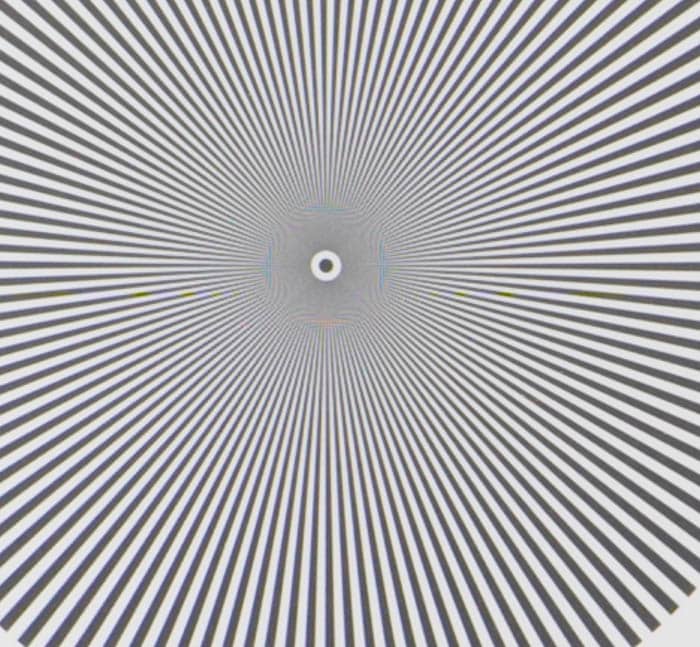
Diffraction costing us sharpness.
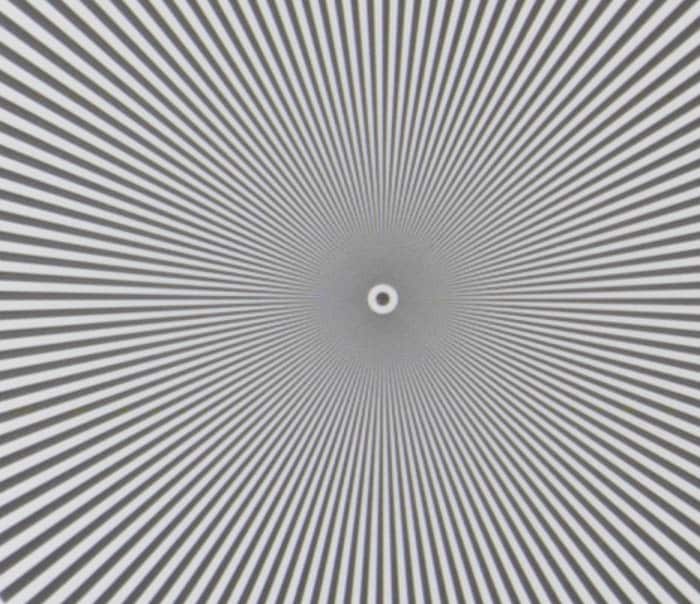
Diffraction costing us a lot of sharpness.
Good performance here. I did some spot checks to see if the mechanical shutter caused a drop in sharpness. I was worried because it’s so loud. No shutter shock issues found.
Glen says
What are the yellow dashes running horizontally, most prominently across the corner crops, but still present less distinctly in the edge crops too?
JimK says
I’m sorry, but I don’t see the yellow dashes you’re talking about.
John Reed says
Hi Jim,
I see yellow dashes too, but only on the upper left corner images and not on the softer f11. They run horizontally just below the target centre and are longer at greater distances from the centre. I see them with either eye and both together. Any given dash disappears when I look directly at it, so it’s an artefact of my vision and presumably being generated from the lower resolution input away from the fovea. What makes this phenomenon puzzling to me is that I have never seen it before on your resolution charts or anyone else’s. Must be those aliens failing to communicate clearly, yet again!